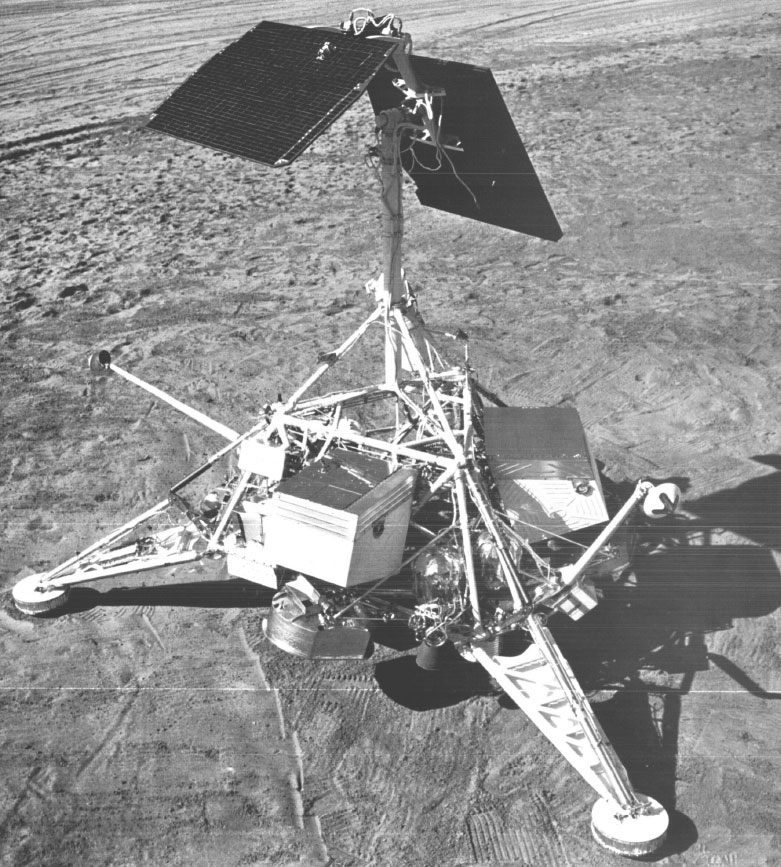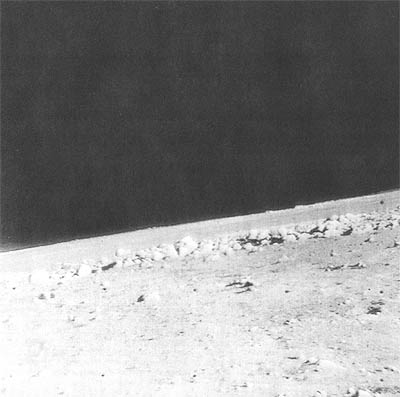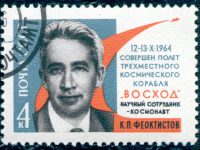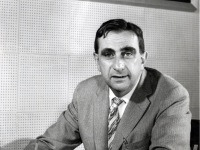
Surveyor 1 – Lunar Lander photo: ©NASA
On June 2, 1966, spaceprobe Surveyor 1, the first of NASA‘s unmanned Surveyor program, as the first American spaceprobe achieved a soft landing on the moon about half a year after the first Moon landing by the Soviet Union‘s Luna 9 probe.[5,6,7]
Luna 9 and the Cold War Space Race
Already on February 3, 1966, the Luna 9 spacecraft had softly landed on the Moon, which also was the first of any planetary body other than Earth. Its purpose simply was to proof that it was possible to send a spaceprobe safely down to the surface of an extraterrestrial body and to transmit photographic data to Earth. The photographs provided a panoramic view of the nearby lunar surface including views of nearby rocks and also of the lunar horizon. Actually, the Soviet authorities did not release the pictures from Luna 9 immediately. Instead, an English observatory monitoring the spaceprobe noticed that the signal format used was identical to the internationally-agreed standard for transmitting newspaper pictures. Thus, the Daily Express rushed a suitable receiver to the observatory and the pictures from Luna 9 were decoded and published worldwide. The Luna 9 success brought the Soviet Union again ahead of the U.S. in the Cold War space race. But, it should only take the US another six months to catch up again.
Surveyor 1 and the Lunar Nights
Surveyor 1 was launched May 30, 1966, and sent directly into a trajectory to the Moon without any parking orbit. Its retrorockets were turned off at a height of about 3.4 meters above the lunar surface. From this height after an 63 hours flight, Surveyor 1 fell freely to the surface and landed safely on a relatively smooth mare surface in the Oceanus Procellarum (the Ocean of Storms). Once landed, Surveyor 1 transmitted video data from the Moon beginning from July 14, 1966 until July 7, 1966 with a two week brake during the lunar night. Because the Moon always presents the same face to Earth, “line-of-sight” radio communications with Surveyor 1 only required changes in ground stations as the Earth rotated. However, since it was solar-powered, Surveyor 1 had no electricity with which to do anything at all during the two weeks of the lunar nights.

A telephoto view of the rocks (is shown). Benjamin Milwitzky, Surveyor Program Manager, NASA, said of it, “This remarkable photo shows a field of large rocks several hundred feet from the spacecraft. They range from about 3 to 6 feet in diameter, and appear to have been excavated from beneath the lunar surface and hurled outward by the impact of a large meteorite.”
Transmitting the First Picture from the Moon
After the NASA’s Ranger missions between 1961 and 1965, whose purpose was to achieve closeup pictures from the moon, Surveyor 1 extended these missions down to the lunar surface. The only scientific sensor equipment of Surveyor 1 was its TV camera system. Overall, it transmitted pictures of the spacecraft footpad and surrounding lunar terrain including surface materials. Overall, Surveyor 1 collected over 11,000 video images during operation until January 7, 1967. The Surveyor images demonstrated that the lunar surface was strong enough to support a landed vehicle or a human. Although initially planned as robotic scientific missions, the project’s focus was switched to engineering in support of the Apollo program to land men on the Moon. The five out of seven Surveyor space probes that finally reached the moon safely, tested landing techniques designed to bring the American astronauts to the Moon. Moreover, the detailed images of Surveyor 1 also indicated that the lunar surface was composed of a granular material interpreted to be produced by the impact of various size meteors over billions of years.
America’s First Lunar Surveyor: 50 Years Later, [9]
References and Further Reading:
- [1] Surveyor 1, at NASA Science
- [2] Surveyor 1 Mission at Jet Propulsion Laboratory
- [3] Surveyor 1 – Experiments and Data
- [4] Luna 9 Mission to the Moon, at NASA
- [5] Luna 10 – the First Artificial Satellite of the Moon, SciHi Blog
- [6] Luna 3 and the Far Side of the Moon, SciHi Blog
- [7] The First Spacecraft to Land on the Moon – Luna 2, SciHi Blog
- [8] Surveyor 1 at Wikidata
- [9] America’s First Lunar Surveyor: 50 Years Later, NASA Jet Propulsion Laboratory @ youtube
- [10] Panoramas of the Surveyor 1 landing site, from The International Atlas of Lunar Exploration by Philip J. Stooke
- [11] Timeline of Lunar Spaceprobes, via Wikidata





